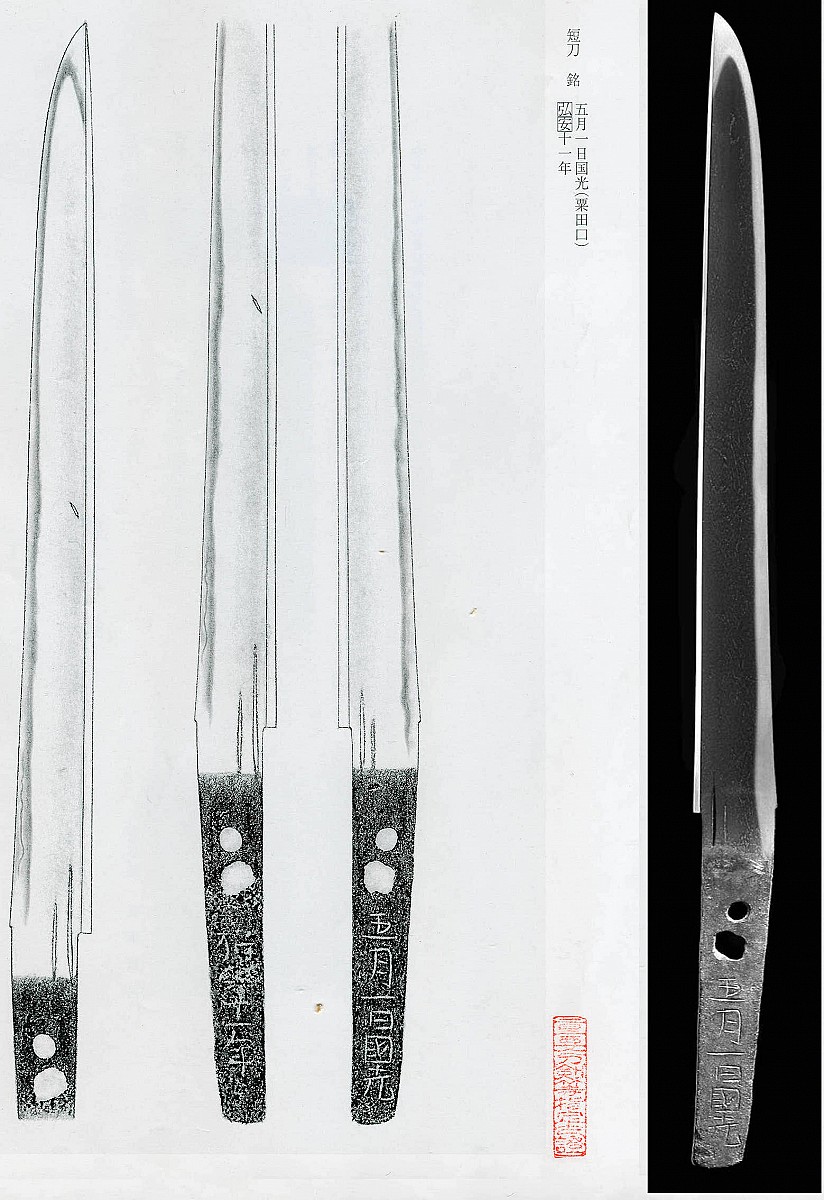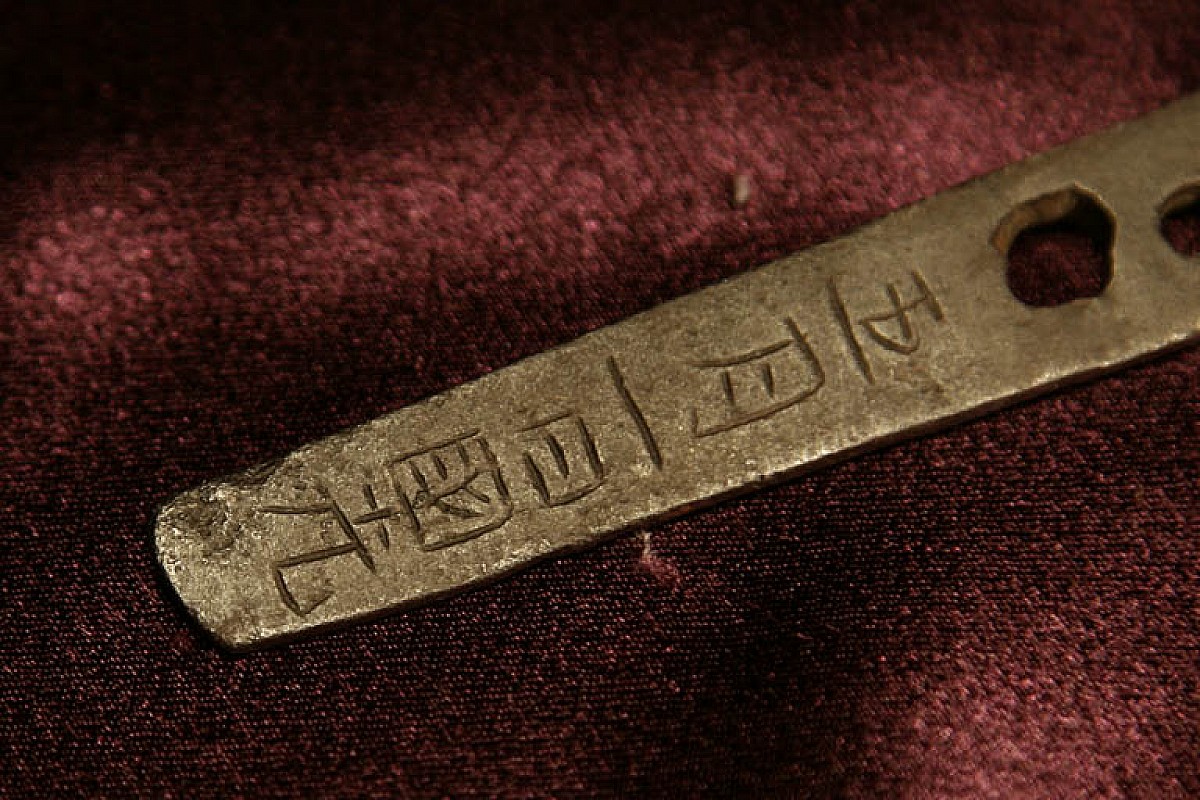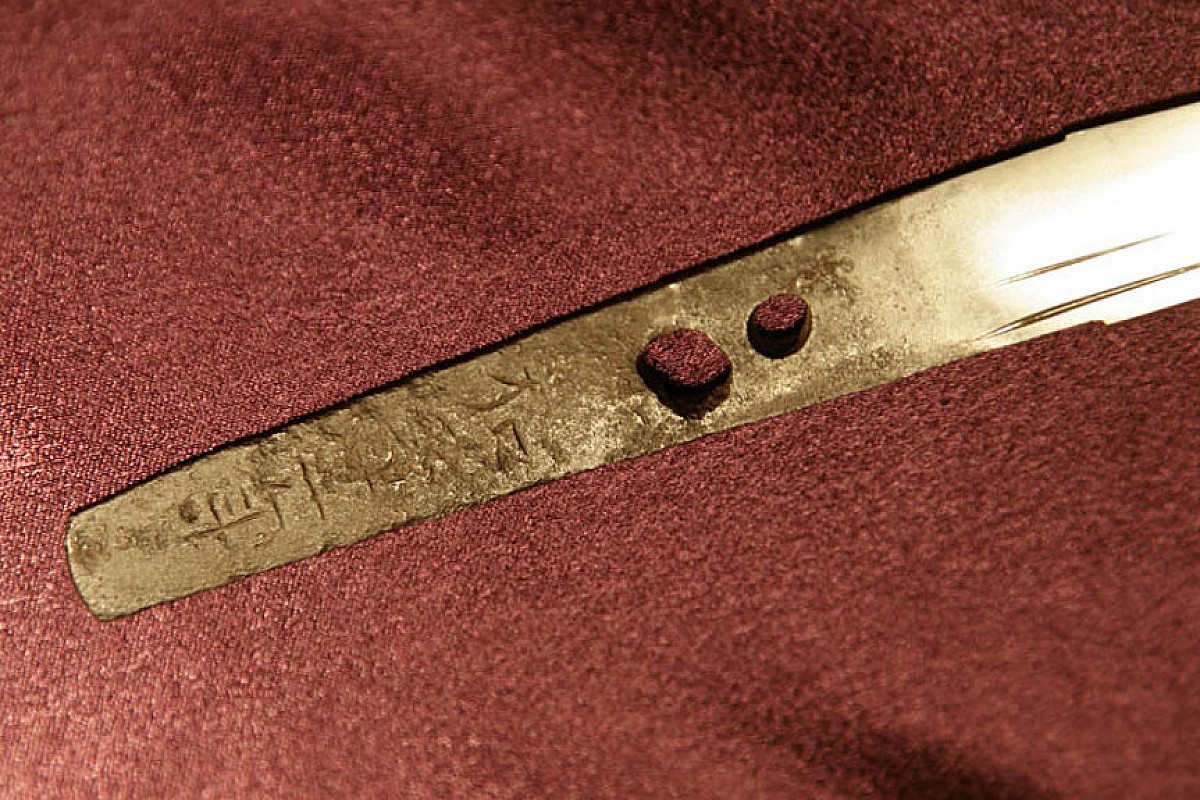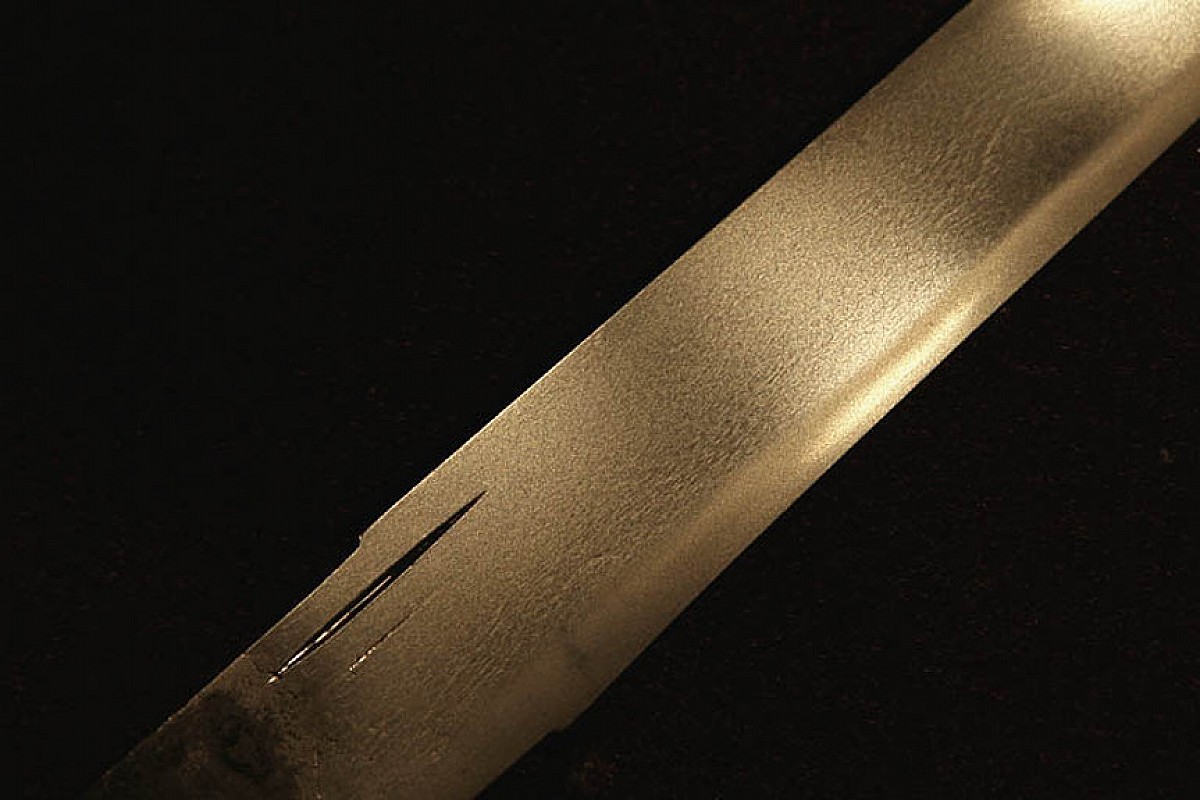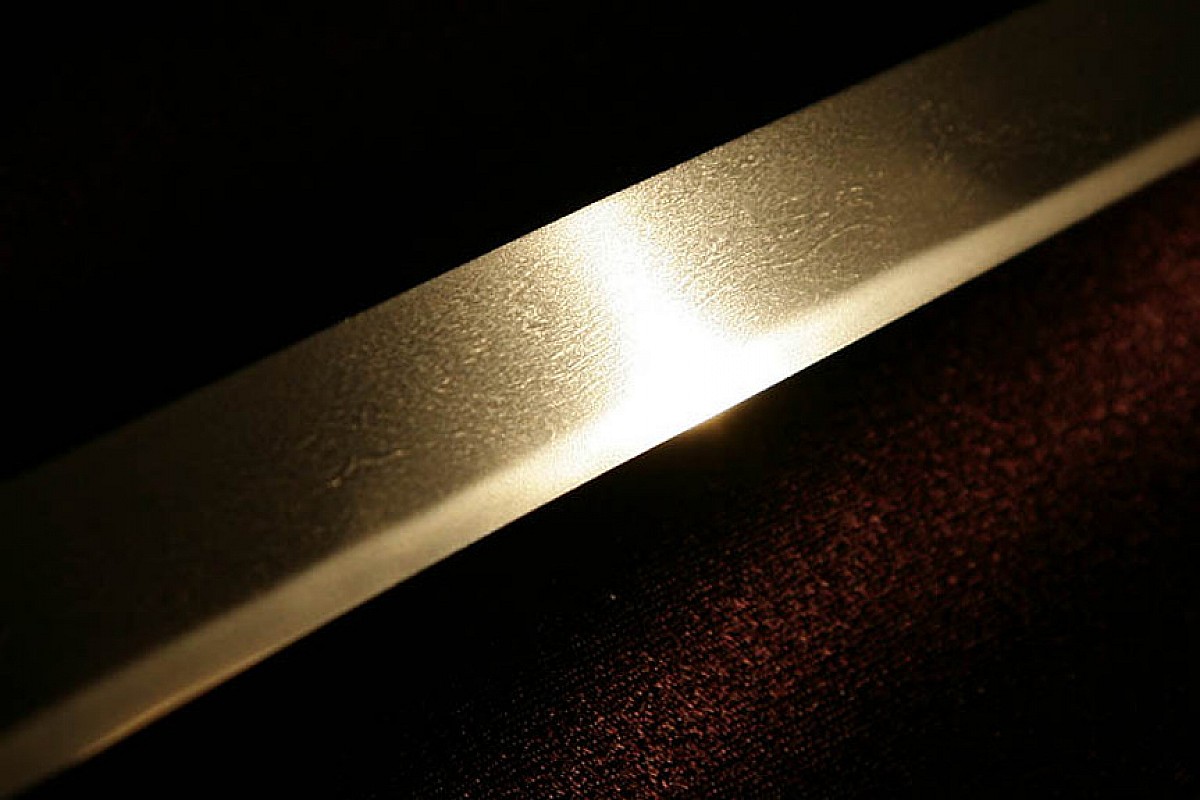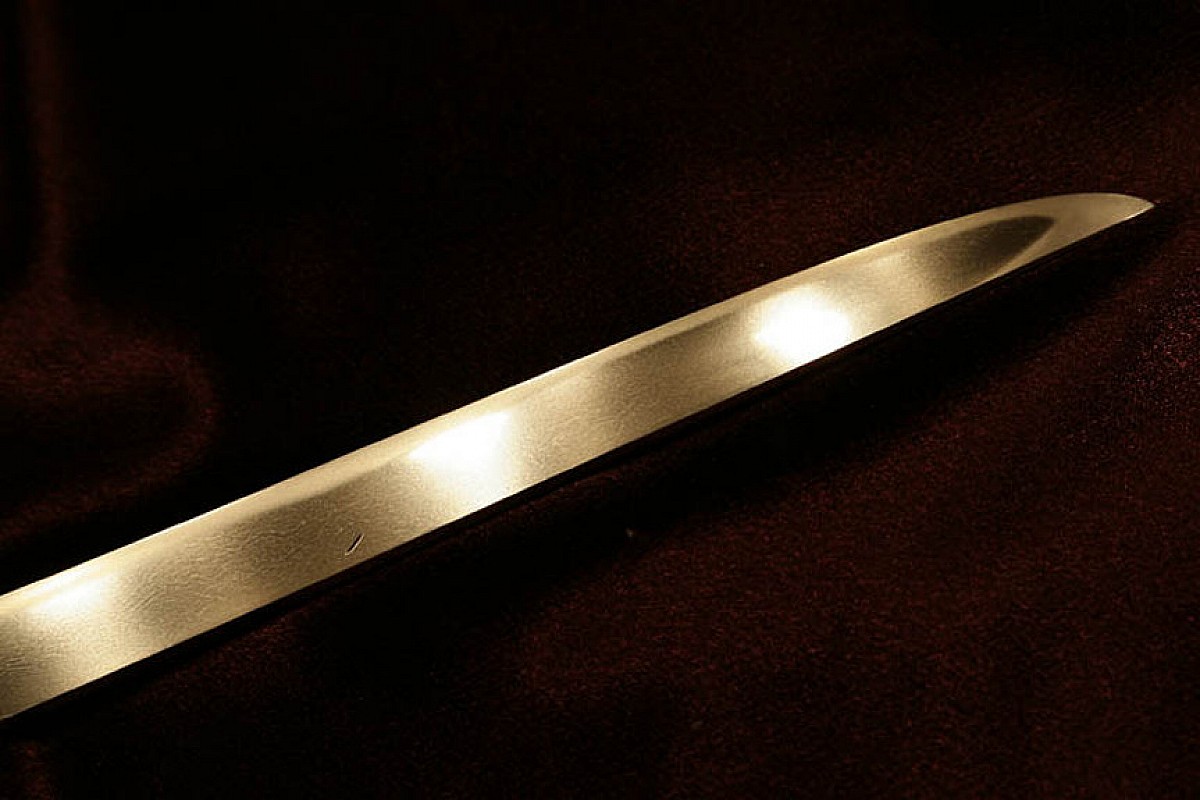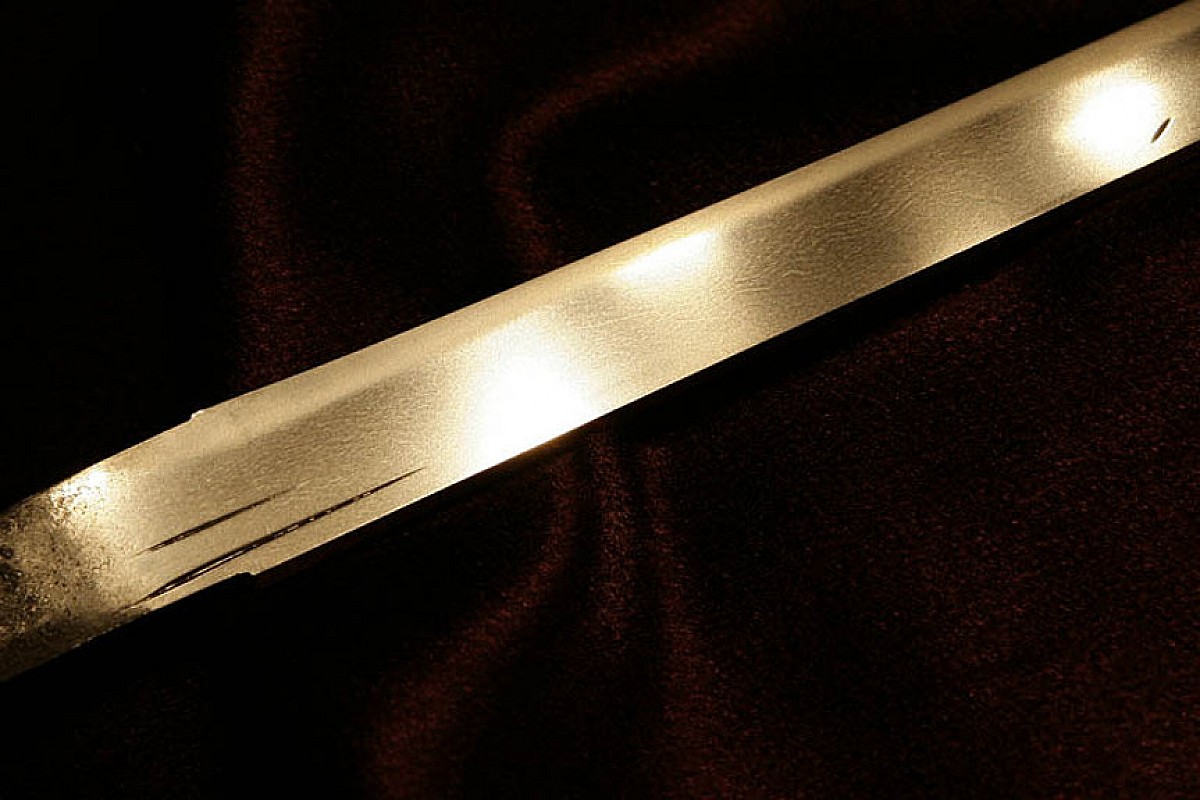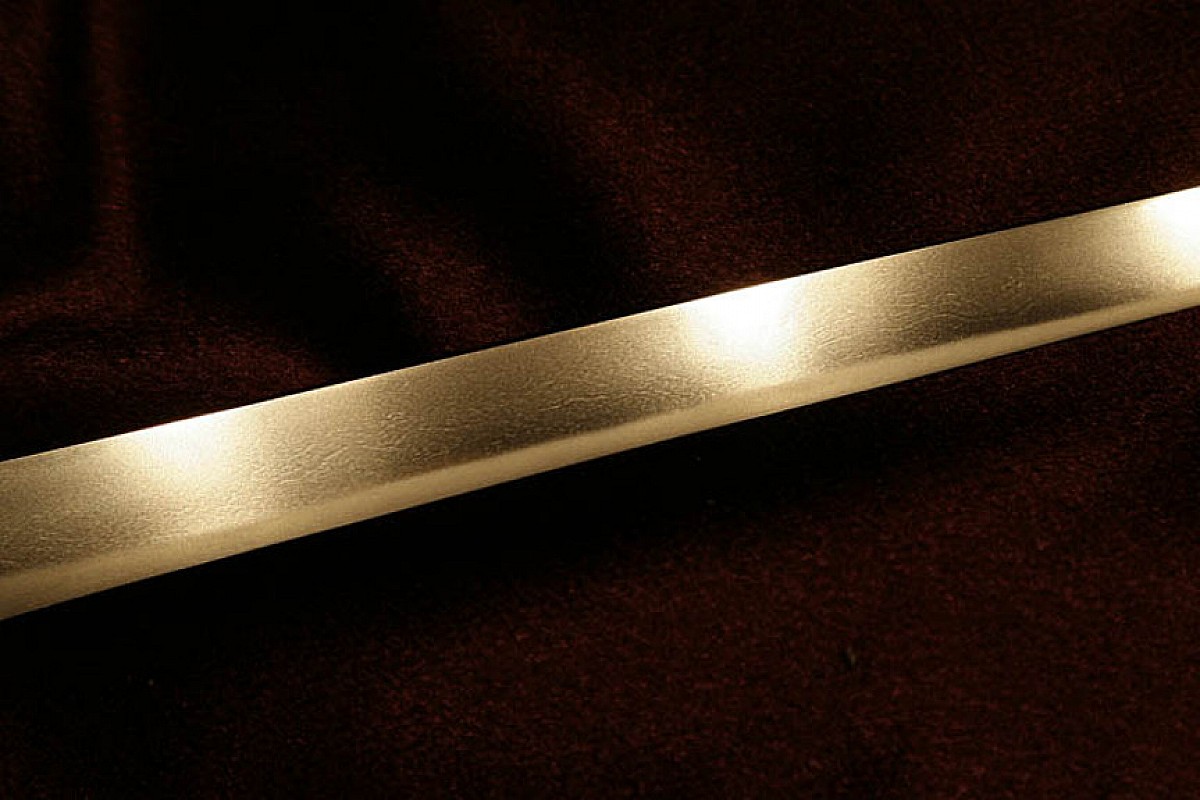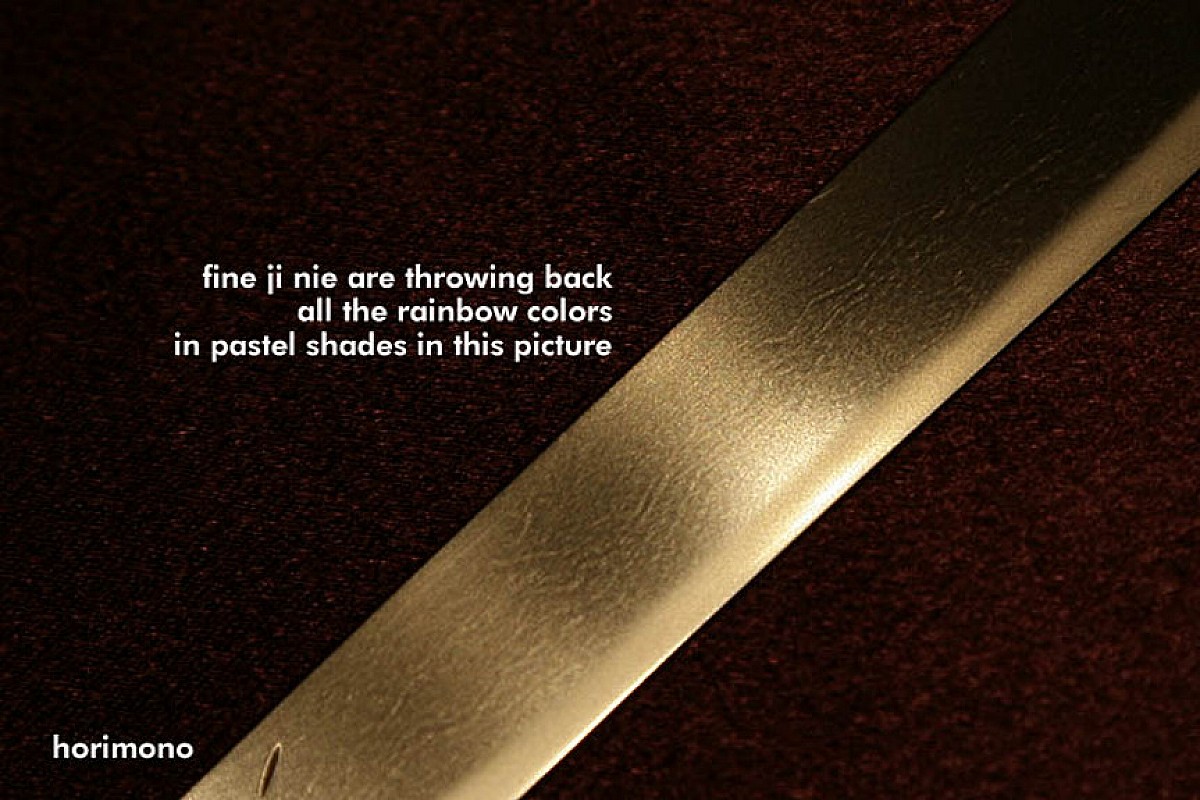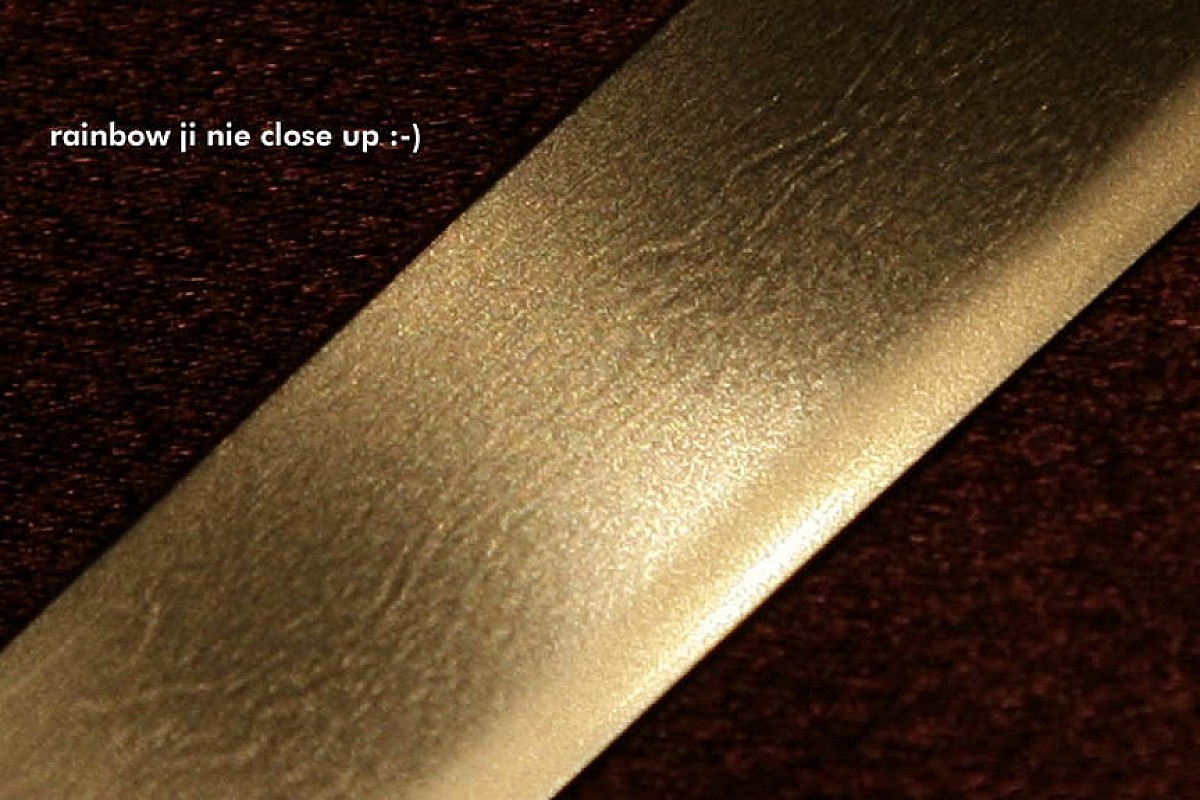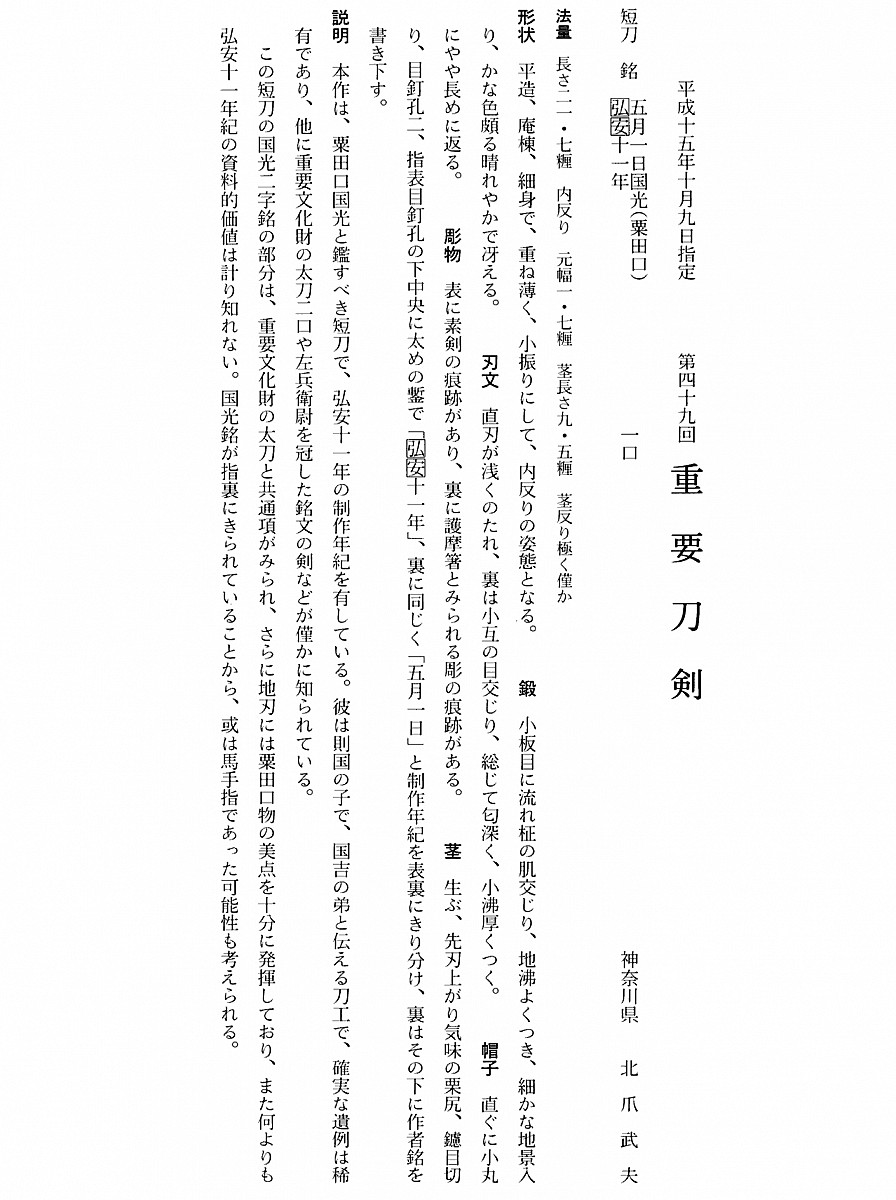Kunimitsu (国光), Awataguchi school, first name Tōbei (藤兵衛), according to transmission the second son of Awataguchi Norikuni (粟田口則国), as his older brother Kuniyoshi (国吉), he borne the honorary title Sahyōe no Jō (左兵衛尉). Kinai (畿内), jōjō-saku.
This tanto was discovered in Japan in 2002 and was a major discovery. To begin with, any signed and dated Kamakura work is a treasure for this reason only, but in this case it is the only signed and dated piece belonging to Awataguchi Kunimitsu. It is also the only signed tanto example, the others being tachi and Juyo Bunkazai. Because of their status, the
Juyo Bunkazai pieces are not likely to ever reach the market and if they did they would not be able to leave Japan making this the only signed piece by the smith to enter the world. Totalling this column, it can be seen that this piece is unique three times over, and because of this it is important reference work and something to be cherished by a collector as the centerpiece of a collection.
Being over 700 years old this tanto shows some age in that it has had its horimono polished down. In spite of this, it is in one-piece construction so still vividly shows beautiful steel of impressive color and beauty. Such a highly unique work, by an important smith of the top school of the Yamashiro province is nearly impossible to find even just to have a chance to study. I believe this sword offers a fantastic opportunity for a collector who wishes to own something that nobody else in the world will have.
Designated as Jūyō Token at the 49th jūyō-shinsa held on the 9th of October 2003.
Sugata: Hira zukuri, iori-mune, slender body, kasane is thin, it is ko-buri (smallish), becomes an uchi-zori shape.
Kitae: Hada is a mixture of nagare-masa in ko-itame, with abundant ji-nie, fine chikei is inserted, and the color of the steel is very clear and serene.
Hamon: Suguba in a shallow notare, the ura has gunome mixed in, overall it has deep (wide) nioi, with thick ko-nie.
Boshi: Ko-maru in suguba, with a rather long return.
Horimono: There are tired traces of a suken on the omote, and there are tired traces of an engraving which can be viewed as gomabashi on the ura.
Setsumei:
Ubu, saki is a kurijiri with a touch of ha-agari, yasurime is kiri, two mekugi-ana, on the sashi-omote in the center below the mekugi-ana there is [KOAN] JUICHINEN (1288) done with a thick tagane, and on the ura there, done in the same manner, there is: 1st Day of 5th Month, dividing the date of manufacture between the omote and ura, and below that on the ura the maker's name is inscribed. This piece is tanto that should be judged as being by AWATAGUCHI KUNIMITSU, and has a date of manufacture of 1st Day of the 5th Month of 1288. He (the maker) was a toko that was said to be the son of Norikuni and the younger brother of Kuniyoshi, confirmed examples of work he left behind are rare, and besides this, there are but two Juyo Bunkazai tachi, and a ken which has SABEIJO (SABEJO) above his name, As for the portion of this tanto with the niji-mei KUNIMITSU, commonalities with the Juyo Bunkazai can be seen. Furthermore, the beautiful points of Awataguchi works can be seen in the ji and ha, and nothing is of more value from a data standpoint the nenki of KOAN JUICHINEN. Because of the fact that the KUNIMITSU mei is cut on the sashi-ura, there is the possibility that this is a METEZASHI [a tanto worn on the right side at the waist].
Author: Darcy Brockbank (published on www.yuhindo.com).
Edition: Dmitry Pechalov.
